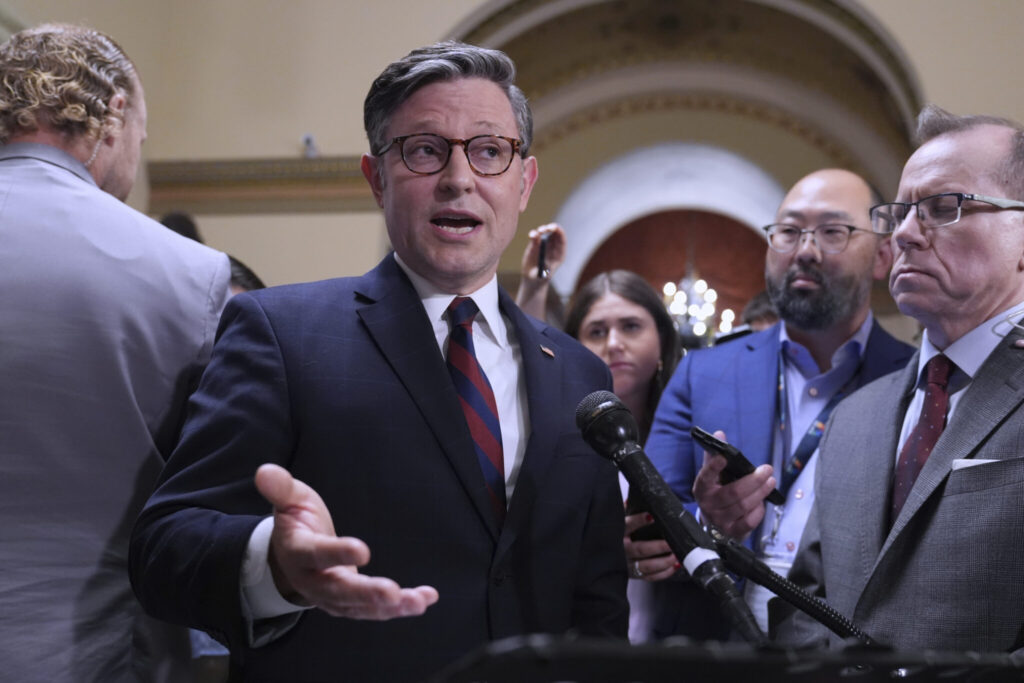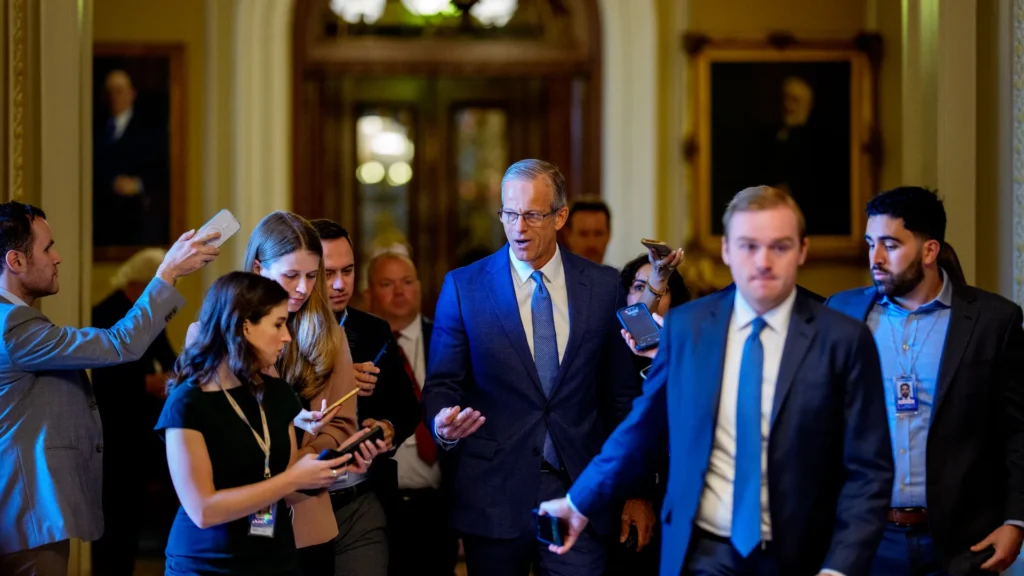Trump’s Megabill Faces Rocky House Path After Senate Victory/ Newslooks/ WASHINGTON/ J. Mansour/ Morning Edition/ President Trump’s sweeping megabill cleared the Senate in a dramatic 51-50 vote. The legislation now faces tough House negotiations and potential Republican infighting. Lawmakers rush to finalize the bill by Trump’s July 4 signing deadline.

Quick Look:
Trump Megabill Quick Look
- Senate passed bill 51-50, VP Vance breaking tie
- House-Senate talks required to reconcile different versions
- Major hurdles include Medicaid cuts, tax changes, GOP divisions
- Trump wants bill signed by July 4
- Democrats uniformly oppose, lack votes to block it
Trump’s Megabill: What Comes Next After Senate Passage — And What Could Derail It
Deep Look
Congressional Republicans are racing toward a self-imposed July 4 deadline to deliver President Donald Trump’s sweeping domestic policy package — but plenty of hurdles remain, even after its dramatic Senate passage.
‘The Senate gave the “One Big Beautiful Bill Act” a green light early Tuesday after a marathon 24-hour vote-a-rama, approving it by a razor-thin 51-50 margin. Vice President JD Vance broke the tie, with three GOP senators — Rand Paul of Kentucky, Thom Tillis of North Carolina, and Susan Collins of Maine — voting no.
Why it matters: Trump’s bill is the centerpiece of his second-term agenda, combining enormous tax cuts, major changes to social programs, and sweeping shifts in federal spending priorities. But it faces strong skepticism across the political spectrum.
Even if Congress hits Trump’s preferred timeline, deep public doubts persist. Polls show widespread concerns about the bill’s cost, cuts to Medicaid, impacts on the social safety net, boosts to immigration enforcement, and rollbacks of green energy incentives.
What happens next to meet the July 4 deadline?
1. House-Senate Reconciliation:
- Lawmakers must resolve differences between the House and Senate versions of the bill — or the House could accept the Senate’s version outright, though that’s unlikely.
- The two bills diverge significantly on issues like Medicaid work requirements, the state and local tax (SALT) deduction cap, clean energy credits for wind and solar, and Trump’s signature provision to eliminate taxes on workers’ tips.
2. House Vote Required:
- Both chambers must ultimately pass the same bill text.
- The House, currently on recess, would have to return to Washington to either approve the Senate plan or vote on a compromise. A vote could come as early as Wednesday.
3. Trump’s Signature:
- Once both chambers agree, the bill goes to Trump’s desk. The president has said he wants to sign it by Friday — timing the victory with Independence Day celebrations.
What could derail the megabill?
- Republican Infighting:
- Tillis and Rep. Don Bacon of Nebraska both announced their retirements this week, highlighting the squeeze moderates face in the GOP.
- Tillis drew Trump-backed primary threats over his opposition to Medicaid cuts. His departure underscores the shrinking influence of Republicans willing to buck Trump.
- Parliamentarian Challenges:
- The Senate parliamentarian has already delayed progress, forcing text revisions like changes to the Medicaid provider tax.
- Future rulings could trigger further rewrites — and additional delays — especially if key provisions are ruled out of bounds under reconciliation rules.
Can Democrats block the bill?
Not directly.
- Democrats are expected to unanimously oppose the bill, but under reconciliation rules, they lack the votes to block it outright.
- Without control of either chamber, their power is mostly limited to political messaging, amendment votes designed to put Republicans on the record on tough issues, and laying groundwork for midterm election attacks.
Even as Republicans push forward, the path remains precarious. The next few days will determine whether Trump secures a major legislative win — or if internal divisions and procedural traps force him to scale back his ambitions.







